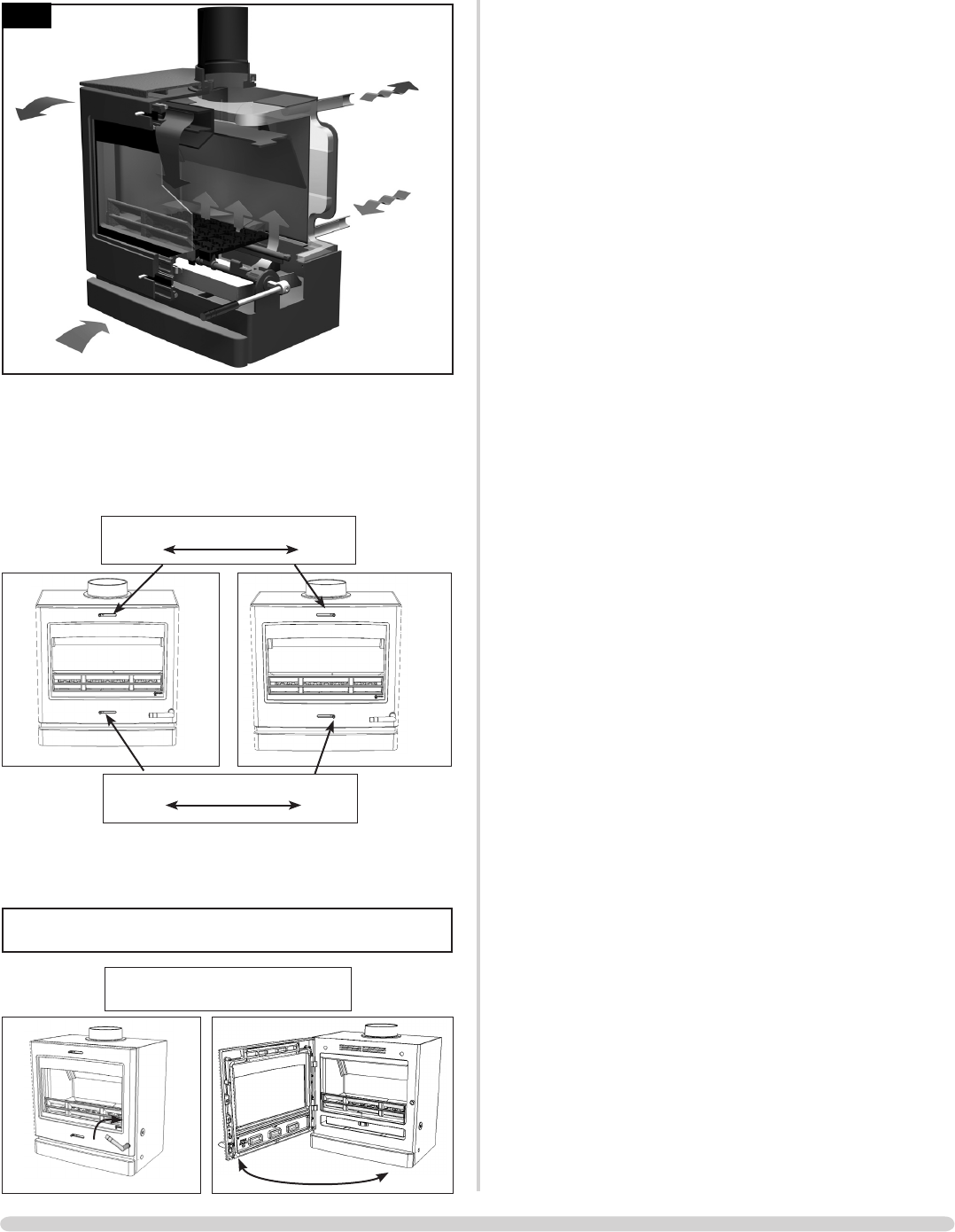
5
USER INSTRUCTIONS
2
PR8857
For Air Controls see the diagram over.
Use the tool provided to operate the air controls.
Do not place tool on hot surfaces (e.g. top of stove).
Airwash Control
CLOSE OPEN
Primary Control
CLOSE OPEN
PR8932 PR8934
DOOR OPERATION
1.14 Use a protected gloved hand to operate.
DO NOT OPEN THE DOOR WITH BARE HANDS
To Open and Close
Rotate handle and pull door to open
PR8935 PR8936
HEATING SYSTEM CONTROLS
CONTROLS, GENERAL
1.18 The controls fitted to the system will provide two
functions:
—To control the comfort level in the house.
—To maintain safety in the event of misuse or
mechanical failure.
COMFORT CONTROLS
1.19 A programmable timer switches the pump on when heat
is required and off when it is not.
The timer, when combined with a room thermostat and
/ or thermostatic radiator valves, enhances the comfort
levels in the house.
Some room thermostats combine the function with
the timer and can be programmed to reduce the room
temperature rather than turning the system off. This is
effective in not allowing rooms to become too cold and
speeding up recovery time.
1.20 The hot water cylinder can also be fitted with a
thermostatic valve which turns off the flow when the
cylinder has reached the desired temperature, but the
heat leak radiator will have to be bigger to cope with the
extra load when the tank is isolated.
SAFETY CONTROLS
1.21 A high limit thermostat is fitted to the gravity flow pipe
set at 80˚C. This thermostat should be connected to the
pump so that the pump is turned on if the temperature
exceeds 80˚C. This will prevent accidental boiling in the
gravity circuit.
1.22 It is also recommended to fit a low limit thermostat on
the central heating return set at 45˚C. This thermostat will
turn the pump off if the return temperature falls below
45C. This will prevent corrosion and condensation within
the stove.
NOTE – Further information on solid fuel central heating
systems can be found in the HETAS engineers training
manual.


















